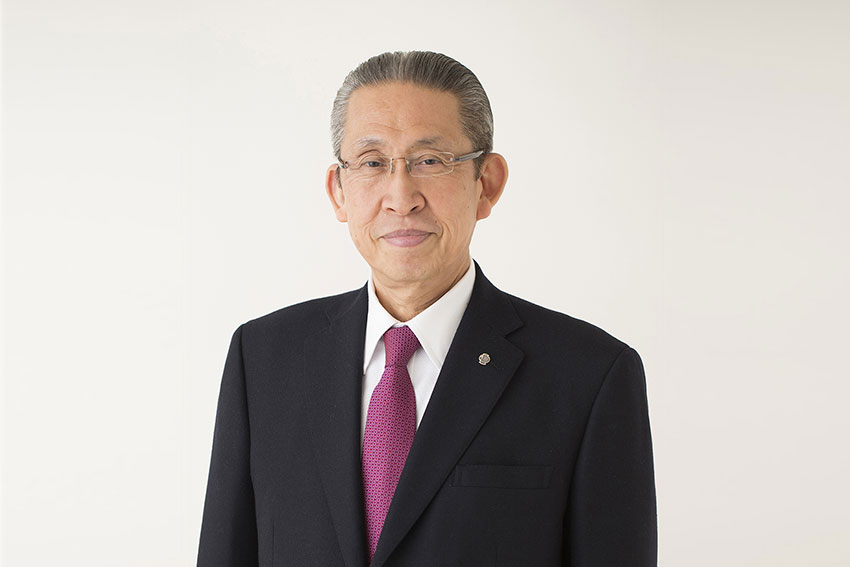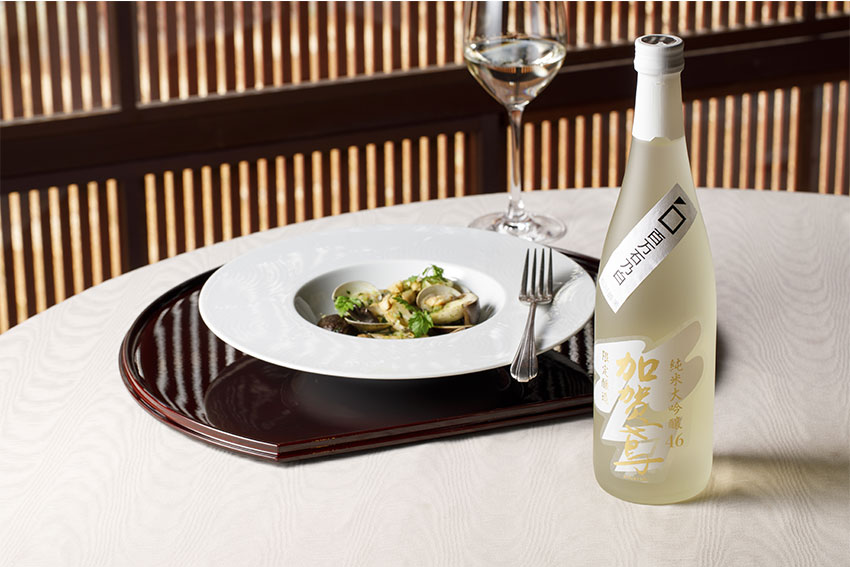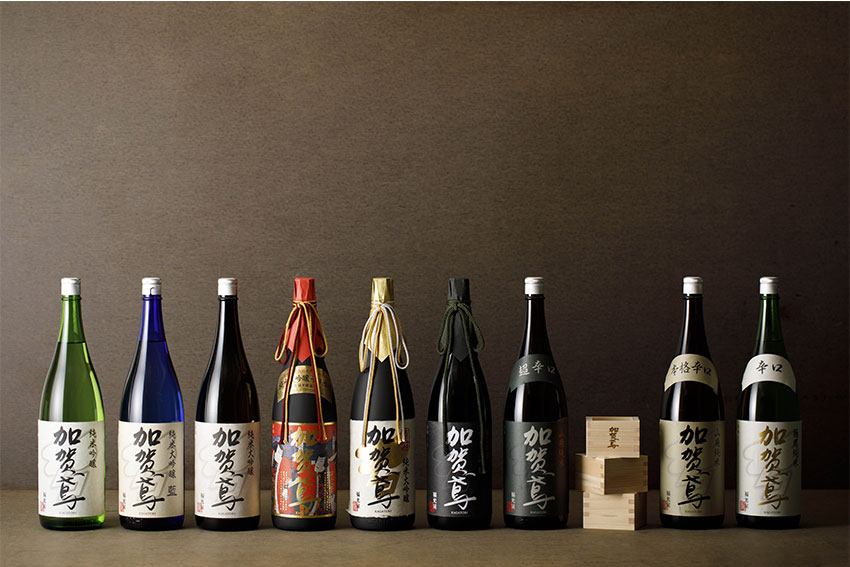Discover Fukumitsuya Sake Brewery’s Commitment to Authentic Junmai Sake, Delivering Pure, Traditional Flavors of Japan.

The popularity of sake has grown alongside the global rise of Japanese cuisine, making it a staple on bar shelves worldwide, both in Japanese and non-Japanese establishments. With steady export growth in key markets such as the United States, China, and Europe, demand is expected to continue to rise. Why do you think Japanese cuisine is gaining increasing popularity and appreciation worldwide?
There are many ways to answer your question, but the most straightforward reason for the growing popularity of Japanese cuisine is its health benefits and delicious taste. Naturally, sake is often paired with Japanese food, serving as the perfect accompaniment in Japanese restaurants. This has led to organic growth, with sake and washoku reinforcing each other’s popularity.
Beyond this, the distinct qualities of sake itself also explain its increasing recognition worldwide. Take ramen, for example—a dish with Chinese origins that pairs exceptionally well with sake. This demonstrates sake’s versatility, as it complements foods beyond traditional Japanese cuisine. The key ingredient that enables this is koji (rice malt), which produces amino acids that create umami and a rich flavor profile. While amino acid exists in beer, it is in sake that it truly shines, bringing out the depth and richness of paired foods.
There are two ways in which sake enhances food pairings. The first is mariage, the idea of balancing flavors harmoniously. The second is when the paired sake enhances the full expression of the dish in a way that embraces and elevates its natural flavors. These qualities allow sake to pair well with cuisines from any country, a concept that is gradually gaining recognition worldwide.

Sake and cuisine pairing example at ROBERT DUMAS
With an alcohol content of around 13% to 16%, sake is, in theory, a like-for-like substitute to wine. Your company has a strong track record of selling sake both domestically and internationally. It is often said that foreigners view shochu and sake as one and the same. From your perspective, do consumers tend to perceive sake as a heavier drink, or do you think they view it as a viable substitute for wine?
This is a poignant question, and perhaps a brief look at our history can help answer it. We first introduced sake abroad 30 to 40 years ago, starting in Paris, where we presented it to Japanese restaurants. Their initial reaction was shock, as they had always associated sake with shochu, a distilled spirit with a much higher alcohol content. This misconception stemmed from the fact that many of the first Japanese restaurants abroad, including those in Paris, were run by Chinese proprietors, who referred to shochu as sake because of cultural habits in China, where shochu is traditionally consumed after a meal.
As a result, for decades, French consumers mistakenly believed that sake was a heavy, high-alcohol drink. It has taken nearly 40 years to correct this misunderstanding, but by 2025, sake is much better recognized and appreciated worldwide.
We believe now is the time for sake’s true essence and beauty to shine on the global stage. Its all-embracing nature as a versatile pairing for any cuisine is becoming more widely understood, largely thanks to koji, the key ingredient that enhances umami flavors and complements food seamlessly.
Umami is often associated with monosodium glutamate (MSG) due to its amino acid connection. While MSG contains only a few amino acids, sake has a complete amino acid profile, with around 20 amino acids derived from koji fermentation. We see this rich umami profile as a key strength in sake’s global appeal moving forward.
Japan’s population crisis is having a significant impact on sake breweries, with three key challenges: a shrinking domestic market, a decline in the number of breweries, and a shortage of skilled brew masters and brewers, leading to the disappearance of certain sake styles as masters retire. Additionally, modern shortcuts and the difficulty in training new brew masters and brewers further complicate the industry’s future. How is your brewery overcoming these challenges? What steps are you taking to ensure a smooth transfer of brewing knowledge from one generation to the next?
We call our brewers kurabito, meaning a person who brews sake. The challenges you mentioned were already on our radar 40 years ago, and we have since implemented measures to address them. However, in the past, we struggled significantly with these issues.
Today, all kurabito are full-time employees and considered official staff at our company. Previously, many were seasonal workers, coming in only during winter for certain brewing tasks. This system made it difficult to transfer knowledge, as much of the expertise remained fragmented.
One interesting challenge we observed in knowledge transfer was that the smaller the age gap, the more difficult it was for brewing techniques to be passed down. For example, when a veteran brewer was 60 and the apprentice was 40, the transition was often rugged and less effective. However, when the veterans were much older and the apprentices much younger, the dynamic resembled a grandparent-grandchild relationship, making the transfer of knowledge feel more natural and nurturing.
To refine our training process, we conducted a comprehensive analysis of the entire sake-making process scientifically. This helped us understand the manual labor involved, the required skills, and the physical techniques utilized. We carefully examined whether each action or movement served a true purpose, distinguishing essential steps from ingrained habits that didn’t necessarily need to be passed down.
This analysis took nearly a decade and allowed us to develop a structured, methodological brewing process. From this foundation, we created video teaching materials, which we now use alongside direct mentorship from experienced craftsmen. The combination of modern documentation and human-to-human training ensures that sake-making knowledge is transferred as smoothly and effectively as possible.
As a 400-year-old company, you exist at a unique intersection of history and modernity. Today, there are aspects of the brewing process that can be completely automated. At the same time, you have this amazing in-house knowledge that I'm sure you want to retain for the next generation of employees. How do you decide what aspects are ‘sacred’ and should remain analog, and which aspects can be digitalized or automated in the brewing process?
First, I should preface my answer by saying that sake is all about taste and fragrance, and these are elements that only human beings can truly perceive and appreciate. From that perspective, certain processes can be automated, such as temperature control, pressure management, and humidity regulation. These tasks can be precisely handled by digital systems to ensure consistency.
However, when it comes to the actual brewing process, this is something that requires the human touch. I firmly believe that sake brewing is an artisan craft, not just a manufacturing process. People may not be drawn to sake made entirely by machines, because it is an art form that must be passed from human to human. The artistry of brewing is what makes sake special, and it is this tradition and craftsmanship that attracts new generations to the industry.
Regarding Japan’s aging population, rather than seeing it as a crisis, I prefer to focus on the positive aspect—there will be more people with the time to truly appreciate and enjoy sake.
Would you say that sake consumption is more common among the older generation, or are you seeing a growing interest among younger drinkers?
From my experience, older generations tend to enjoy sake more, while younger people are generally less interested in drinking it. Many younger consumers are spending less on food, so they are less likely to pair it with sake. However, as their lifestyles evolve and they develop a greater appreciation for finer things, I believe they will naturally come to enjoy and value sake.
One key aspect we emphasize is that our sake is meant to be enjoyed throughout a meal, thanks to its light and balanced profile. The quality of our junmai sake lies in its purity and balance, making it a sake that can be enjoyed throughout an entire meal. Thanks to our full fermentation process, it leaves no aftertaste, resulting in a light and pure drinking experience.
Adjacent to your brewery, you have your flagship store, where visitors can enjoy guided tours and sake tasting experiences. Can you share more about what guests can expect from these experiences?
We are working to strengthen sake promotion through our brewery tours and tasting experiences. In addition to these, we have direct sales shops—two in Tokyo and two in Kanazawa City—where visitors can gain firsthand information and deepen their interest in sake.
These shops provide an opportunity to engage with customers directly, allowing us to guide them toward visiting the brewery to experience our sake-making process and taste our products firsthand.
We understand that you are leveraging your fermentation techniques beyond sake, expanding into fermented rice-based foods, natural skincare, and health drinks. Examples include ANP71, a yogurt-flavored fermented drink with rice koji, as well as your three distinct skincare lines—KOME LAB, Amino Rice, and FRENAVA. What synergies have you been able to create among these diverse product lines?
If we look at the original Japanese term for a sake brewery, "sakagura," it traditionally means a place where sake is made. However, we have redefined this concept to mean "a place where rice is fermented." This shift in perspective led us to explore how rice fermentation can contribute to better lifestyles and well-being, while still maintaining sake brewing as our core focus.
Through this approach, we realized that fermented rice products offer a wide range of benefits, particularly in producing amino acids, which are essential for health. This synergy has allowed us to expand into various fermented beverages, such as our fermented rice milk, as well as cosmetics and skincare, where amino acids play a key role. This became an opportunity to spread awareness of fermented rice culture and the many possibilities it holds. The continuous refinement of our offerings has been central to our company’s evolution over the years.
Another key aspect of our approach is our meticulous selection of rice. Rice is one of the least allergenic food sources, making it a safe and versatile ingredient for various products. As a result, our company has been able to promote healthier lifestyles by encouraging the consumption of more fermented products, which can contribute to longer and healthier lifespans. By emphasizing fermentation and amino acids, we aim to support immune system health and enhance overall well-being for consumers.

KAGATOBI sake
Your company is currently exporting “Kagatobi” brand and “Kuroobi” brand to the United States. Looking ahead, in which international markets are you seeking new distribution partnerships?
We are looking for partners who can not only help us sell our sake but also contribute to increasing brand recognition. Our ideal partnerships are those that provide strong market support, as we believe that long-term success comes from finding the right connections. These connections don’t happen by chance—they must be built through various channels, which is why we deeply value the relationships we have established.
Our overseas expansion strategy takes two key approaches. One is to enter new markets where our sake does not yet have a presence, such as India, and focus on developing those markets. The other is to expand within existing distribution channels, such as China and the US, where our sake is primarily distributed through Japanese restaurant chains at a B2B level.
Moving forward, we see direct consumer sales as a major indicator of our expansion success. This means broadening our reach beyond B2B and ensuring that our sake is purchased and enjoyed directly by consumers. Additionally, we recognize that e-commerce and online platforms will play a key role in connecting with customers globally.
Imagine we return for another interview in 2030. What goals or dreams do you hope to have achieved by then?
One of our dreams is to produce and popularize organic sake. Unlike organic wine, organic sake has yet to achieve widespread success, and currently, few breweries produce high-quality organic sake.
For sake to be truly organic, the entire process—from rice cultivation to brewing—must be organic. We began working on this around 20 years ago, and while sales volume remains limited, we have obtained the necessary certifications to produce and market organic sake. By 2030, our goal is to enhance and promote our organic sake, elevating it to a new level of recognition and success.
For more information, please visit their website at: https://www.fukumitsuya.co.jp/global/
0 COMMENTS